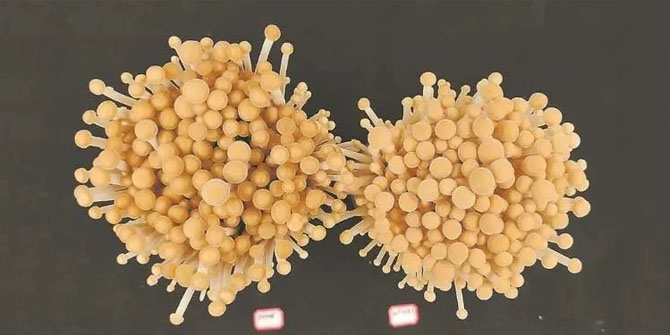The Rise of a New Yellow Enoki Mushroom Variety

In today's market, enoki mushrooms are typically seen in their "white, young, and slender" form. However, this wasn’t always the case. Wild enoki mushrooms are naturally yellow, and early cultivation by farmers primarily focused on this yellow variety. It wasn't until the late 1980s that white enoki mushrooms entered the market, quickly replacing their yellow counterparts due to their appealing appearance and high yield.
So, why do enoki mushrooms come in both white and yellow? The answer lies in their chromosomes, which contain two sets of genes related to color. One set determines whether the mushrooms are white or yellow, while the other regulates the intensity of the color.
The allure of the white variety is primarily its aesthetic appeal. Its pristine, white appearance caters to consumer preferences. In contrast, yellow enoki mushrooms are known for their rich aroma and crunchy texture, making them less likely to get stuck in your teeth compared to the soft texture of white enoki.
In recent years, thanks to the efforts of breeding experts, the once-overlooked yellow enoki mushroom has made a resurgence. Through selective breeding and genetic improvement, these mushrooms have opened up new opportunities in the industry.
Traditionally, yellow enoki mushrooms faced two significant challenges: low yield and unappealing appearance. Expert teams utilized hybridization techniques, combining the genes of the white variety with the yellow. This approach aimed to retain the excellent culinary qualities of the yellow mushrooms while enhancing their production capabilities.
After considerable effort, a new variety of yellow enoki mushrooms has emerged. This improved strain boasts higher yields than the existing white varieties, with dry caps and uniformly colored stems and caps, making for an appealing product.
As the yellow enoki mushroom continues to gain popularity, it highlights the importance of innovation in agriculture and the value of diversity in our food supply.

(1)(1).jpg)
 CONTACT
CONTACT